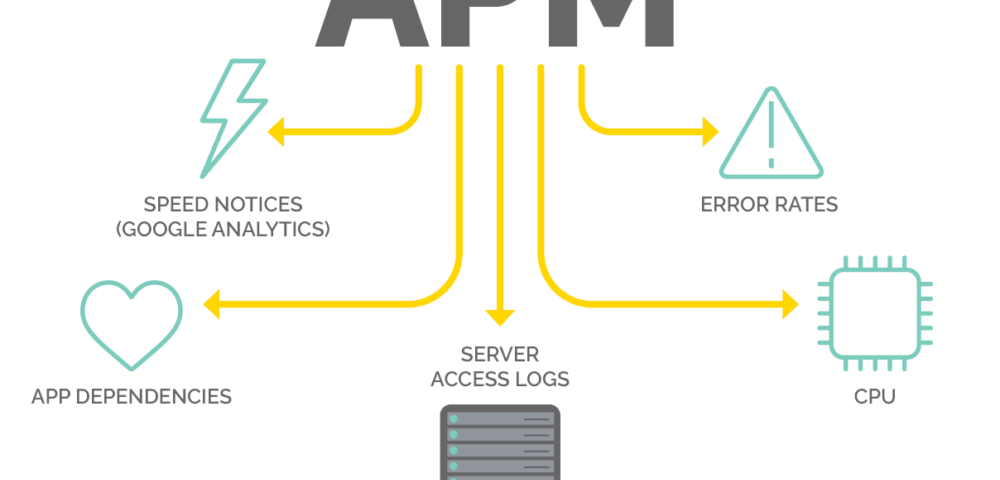App Performance Monitoring: Ensuring Seamless User Experience

The Power of Mobile Ads: Boosting Engagement and Revenue
May 26, 2024
Cloud Integration: Transforming Business Operations and Efficiency
May 26, 2024App Performance Monitoring: Ensuring Seamless User Experience
App performance monitoring is crucial for delivering a smooth and reliable user experience. As mobile and web applications become integral to daily life, ensuring they run efficiently and without errors is paramount. This article explores the importance of app performance monitoring, key metrics to track, and best practices for maintaining optimal app performance.
Thank you for reading this post, don't forget to subscribe!Understanding App Performance Monitoring
App performance monitoring involves tracking and analyzing various metrics to ensure an application runs smoothly. It helps identify issues, such as slow load times, crashes, and bugs, that can affect user experience. Monitoring tools provide real-time insights into app performance, enabling developers to address problems promptly.
Why App Performance Monitoring is Essential
User Experience
A seamless user experience is critical for app success. Slow or unresponsive apps lead to user frustration and abandonment. Monitoring ensures that any performance issues are quickly identified and resolved, maintaining a positive user experience.
Retention and Engagement
High-performing apps are more likely to retain users and keep them engaged. Regular monitoring helps maintain app performance, encouraging users to return and continue using the app.
Reputation Management
An app that consistently performs well builds a good reputation. Positive reviews and word-of-mouth can significantly impact an app’s success. Performance monitoring helps maintain the quality that users expect.
Revenue Generation
For many apps, performance directly impacts revenue. Whether through in-app purchases, subscriptions, or ad revenue, a well-performing app ensures users can complete transactions without issues, maximizing revenue potential.
Key Metrics for App Performance Monitoring
To effectively monitor app performance, developers should track several key metrics. These metrics provide insights into different aspects of app functionality and user experience.
Load Time
Load time measures how long it takes for the app to start and become usable. Faster load times are crucial for user satisfaction. Monitoring this metric helps identify any delays in app startup.
Crash Rate
Crash rate indicates how often the app crashes during use. High crash rates can lead to user frustration and abandonment. Identifying and addressing the causes of crashes is essential for maintaining app stability.
Response Time
Response time tracks how quickly the app responds to user inputs. Slow response times can lead to a poor user experience. Monitoring this metric helps ensure the app remains responsive and interactive.
Error Rate
Error rate measures the frequency of errors encountered by users. These can include bugs, failed transactions, or other issues. Reducing the error rate improves the overall user experience.
Throughput
Throughput refers to the amount of data processed by the app over a specific period. High throughput indicates the app is handling data efficiently. Monitoring throughput helps ensure the app can scale effectively.
Battery Usage
Battery usage tracks the app’s impact on device battery life. Apps that consume excessive battery can frustrate users. Monitoring this metric helps optimize the app’s energy efficiency.
Network Latency
Network latency measures the delay in data transmission between the app and the server. High latency can lead to slow load times and poor performance. Monitoring network latency helps optimize data transfer and improve app speed.
Best Practices for App Performance Monitoring
Implementing best practices for app performance monitoring can help maintain optimal app performance and ensure a positive user experience.
Use Reliable Monitoring Tools
Choose reliable performance monitoring tools that provide comprehensive insights into your app’s performance. Tools like New Relic, AppDynamics, and Firebase Performance Monitoring offer detailed analytics and real-time alerts.
Set Performance Benchmarks
Establish performance benchmarks to measure your app’s success. These benchmarks should be based on industry standards and user expectations. Regularly compare your app’s performance against these benchmarks to identify areas for improvement.
Regularly Analyze Data
Regularly analyze performance data to identify trends and potential issues. Use this data to make informed decisions about updates and optimizations. Continuous analysis helps keep the app running smoothly.
Perform Load Testing
Conduct load testing to understand how your app performs under high user traffic. This helps identify bottlenecks and ensures the app can handle peak usage times without degrading performance.
Implement Real-Time Alerts
Set up real-time alerts to notify you of any performance issues. Immediate alerts allow you to address problems quickly, minimizing the impact on users.
Optimize Code and Resources
Regularly review and optimize your app’s code and resources. Efficient code and resource management reduce load times and improve overall performance. Focus on minimizing unnecessary processes and optimizing data handling.
User Feedback Integration
Incorporate user feedback into your performance monitoring strategy. Users can provide valuable insights into issues you might not detect through monitoring tools alone. Regularly review feedback and use it to guide improvements.
Regular Updates and Maintenance
Keep your app updated with regular maintenance and improvements. Regular updates ensure the app remains compatible with the latest devices and operating systems, and ongoing maintenance addresses any emerging issues.
Conclusion
App performance monitoring is essential for delivering a seamless user experience. By tracking key metrics and implementing best practices, developers can ensure their apps run efficiently and meet user expectations. Reliable monitoring tools, regular data analysis, and user feedback integration are crucial for maintaining optimal app performance. Embrace these strategies to enhance user satisfaction, boost engagement, and drive the success of your app.
For more information: www.ecbinternational.com


